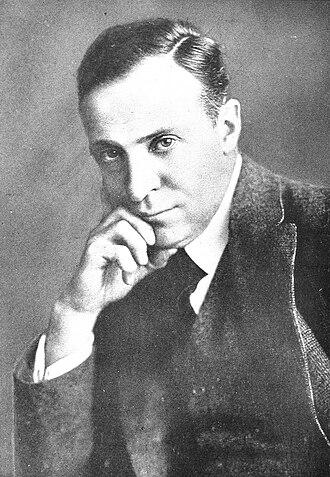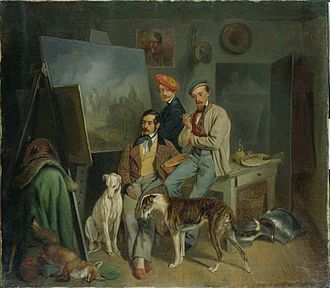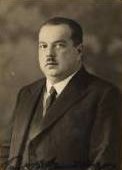Discover Your Roots
SIGN UPDiscover Your Roots
SIGN UPBenno is a male name of Hebrew origin, meaning "Son." It is a simple yet powerful name that carries the significance of being a son. In Hebrew culture, the concept of sonship holds great value and represents a strong familial bond. The name Benno has been historically associated with notable figures such as saints, bishops, artists, musicians, and athletes, reflecting its enduring presence across different fields. Whether as a given name or a surname, Benno has left its mark in various professions and cultural references. With its rich Hebrew heritage and timeless meaning, Benno continues to be a cherished name choice for many families seeking a name that honors the legacy of sonship.

Benno Janssen (March 12, 1874 – October 14, 1964) was a renowned American architect known for his significant contributions to both commercial and residential architectural works. Born in St. Louis, Missouri, Janssen pursued his education at the University of Kansas and further honed his skills at the Massachusetts Institute of Technology and the École des Beaux-Arts in Paris, France. His professional journey led him to establish partnerships with prominent architects and create notable structures, including the Pittsburgh Athletic Association, the William Penn Hotel, and the Mellon Institute, among others.Janssen's architectural style was characterized by picturesque irregular configurations, complex slate roofs, large groups of rectangular windows, and museum-quality wrought-iron details, showcasing his meticulous attention to detail and artistic vision. His collaboration with renowned artisan Samuel Yellin further enhanced the elegance of his projects.In 1899, Janssen married Edith Patton, and they had three children. After a successful career, he retired in 1939 and passed away in Charlottesville, Virginia. His legacy lives on through his timeless architectural masterpieces, which continue to inspire and captivate admirers of architectural excellence worldwide. For further insights into Janssen's life and works, Donald Miller's book "The Architecture of Benno Janssen" is a valuable resource.

Benno Rafael Adam (15 July 1812 – 8 March 1892) was a renowned German animal painter, distinguished for his exceptional depictions of game animals, hunting dogs, and pets in larger compositions. Born in Munich as the eldest son of the painter Albrecht Adam, Benno Adam's talent and passion for art led him to become associated with the Chiemsee artists' colony. In addition to his remarkable paintings, he also illustrated various textbooks and manuals, showcasing his diverse artistic abilities. Notably, in 1834, he married Josepha Quaglio, the eldest daughter of the painter and architect Domenico Quaglio, and their son Emil Adam followed in his footsteps to become a painter as well. Benno Adam's artistic legacy lives on through his captivating works and his influence on the art world. His brothers, Franz and Eugen Adam, were also esteemed painters, further solidifying the Adam family's significant contribution to the art scene.

Benno Landsberger (21 April 1890 – 26 April 1968) was a renowned German Assyriologist known for his significant contributions to the field of Oriental Studies. He embarked on his academic journey at Leipzig, where he studied under the guidance of esteemed scholars such as August Fischer and Heinrich Zimmern. Landsberger's academic pursuits were briefly interrupted when he served in the Austro-Hungarian Army during World War I, showcasing exceptional valor on the Eastern Front. However, his association with the academic realm persisted, leading to prestigious appointments in various institutions, including the University of Chicago.Landsberger's scholarly endeavors encompassed a diverse range of topics, notably delving into the ritual calendar of Babylonia and Assyria, as well as producing valuable materials for the Sumerian Lexicon. Despite facing adversity during the Nazi era, he found solace in the academic sphere and eventually relocated to the University of Chicago, where he made enduring contributions. His dedication and expertise earned him recognition, culminating in his election to the American Philosophical Society in 1959. Benno Landsberger's legacy endures through his seminal works and enduring impact on the study of ancient civilizations.

Bernhard Henry "Benno" Singer (28 February 1875 – 17 May 1934) was a Hungarian-born British entertainment administrator known for his influential role in the entertainment industry. After settling in London at a young age, Singer became a central figure in the entertainment scene in Kristiania, Norway. He played a pivotal role in establishing and managing the revue stage Theatre Moderne from 1914 to 1925, where he showcased the breakthrough of comedian August Schønemann in the popular revue "Futt" in 1915. Singer also left his mark on the Opera Comique from 1918 to 1921. His contributions extended to managing the entertainment at the 1914 Jubilee Exhibition in Kristiania, demonstrating his impact on the cultural landscape. Throughout his life, Singer was married twice, first to Evelyn Mary Davis and later to Mella Marie Schmidt, before his passing in Dublin in 1934. Bernhard Henry "Benno" Singer's legacy continues to be remembered for his significant contributions to the entertainment industry during the early 20th century.

Benno Ernst Heinrich Reinhardt (1819-1852) was a renowned German physician and prosector at Charité hospital in Berlin, known for his significant contributions to pathology. Born in Neustrelitz, Reinhardt excelled in cello and was an acclaimed tenor during his school years. He pursued his passion for medicine at the University of Berlin, studying under prominent teachers such as Friedrich Gustav Jakob Henle and Johannes Peter Müller. It was during this time that he met his future collaborator, Rudolf Virchow. Reinhardt specialized in pathological anatomy and, in 1847, co-founded the journal Virchows Archiv with Virchow. He dedicated his career to the study of pathological anatomy and physiology, leaving a lasting impact on the field. Tragically, he passed away at the age of 32 from tuberculosis of the lung. Despite his untimely death, Reinhardt's work continued to influence the medical community, as his studies were compiled and edited posthumously by Rudolf Leubuscher. His legacy lives on through his invaluable contributions to the field of pathology.
All images displayed on this page are sourced from Wikipedia or Wikimedia Commons.We use these images under their respective Creative Commons or public domain licenses. Wherever applicable, author attributions and license information are provided. If you believe an image is used incorrectly or outside its license terms, please contact us so that we can review and correct the issue.